Massachusetts
Budget Weekend on Nantucket
During the peak summer season the high prices on Nantucket push it a bit out of reach for many, but the spring and fall shoulder seasons are a perfect time to visit.
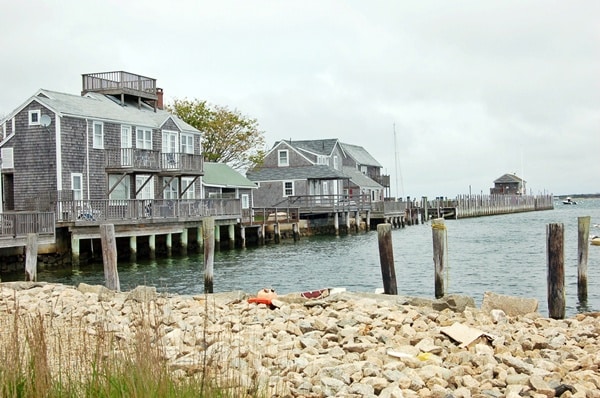
Photo Credit : Aimee Seavey
As soon as you step foot onto the island of Nantucket, just 14 miles long and 3.5 miles wide off the coast of Cape Cod, an invisible but powerful “click” takes place, and you just know you’re somewhere special. Unlike its neighbor — the larger, busier Martha’s Vineyard — Nantucket offers the ultimate small New England island experience thanks to pristine beaches, three lighthouses, acres of conservation land, great food, and a thriving community of boutiques and galleries. The entire island was designated a historic district in 1966, and contains one of the highest concentrations of pre-Civil War structures in the country, including the oldest operating windmill.
During the peak summer season the high prices on the island push it a bit out of reach for many of us (myself included), but the spring and fall shoulder seasons are a perfect time to visit.
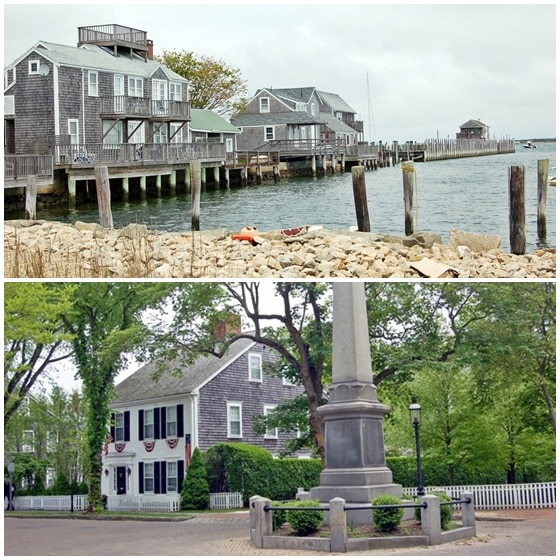 I spent a few days there last spring in late May, beneath overcast skies that constantly threatened rain (only fitting for an island nicknamed “The Gray Lady”) but thankfully, never did.
The magnetic pull of Nantucket begins as soon as you leave the ferry and head up Straight Wharf towards Main Street on a perfect jigsaw puzzle of brick and cobblestone. The buildings and shops downtown are meticulously maintained. Scrubbed brick, fresh paint, ocean-air weathered shingles, crisp awnings, and flowers spilling out of windowsills and doorsteps greet you at every turn, urging you to slow your pace and adjust to “island time.”
I spent a few days there last spring in late May, beneath overcast skies that constantly threatened rain (only fitting for an island nicknamed “The Gray Lady”) but thankfully, never did.
The magnetic pull of Nantucket begins as soon as you leave the ferry and head up Straight Wharf towards Main Street on a perfect jigsaw puzzle of brick and cobblestone. The buildings and shops downtown are meticulously maintained. Scrubbed brick, fresh paint, ocean-air weathered shingles, crisp awnings, and flowers spilling out of windowsills and doorsteps greet you at every turn, urging you to slow your pace and adjust to “island time.”
 You might argue that things on Nantucket seem almost too pristine and perfect, like a frozen photo shoot, but for me, that’s the reason to go – to leave reality behind.
Even this old Chevy looks right at home on a Nantucket side street.
You might argue that things on Nantucket seem almost too pristine and perfect, like a frozen photo shoot, but for me, that’s the reason to go – to leave reality behind.
Even this old Chevy looks right at home on a Nantucket side street.
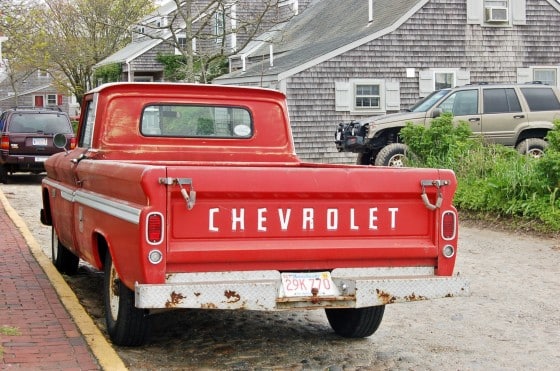 We stayed at the Jared Coffin House, in a great downtown location, made affordable by taking advantage of a sale online advertising discounted spring rates.
We stayed at the Jared Coffin House, in a great downtown location, made affordable by taking advantage of a sale online advertising discounted spring rates.
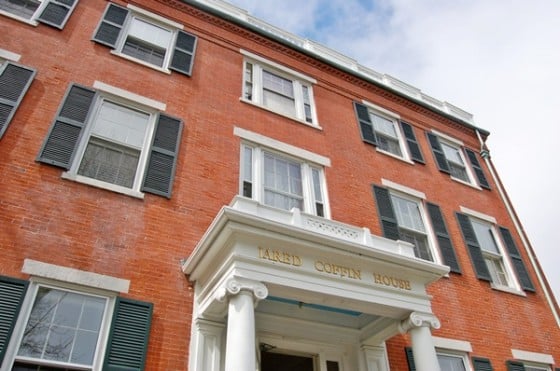 By leaving the car at home, we enjoyed the adventure of studying maps and getting around on our own two feet. It’s easy to feel better about indulging on maple walnut ice cream from The Juice Bar, penuche fudge from Aunt Leah’s, and gummy lobsters from The Nantucket Candy Company when you know you’ll be burning some extra calories while sightseeing on foot!
By leaving the car at home, we enjoyed the adventure of studying maps and getting around on our own two feet. It’s easy to feel better about indulging on maple walnut ice cream from The Juice Bar, penuche fudge from Aunt Leah’s, and gummy lobsters from The Nantucket Candy Company when you know you’ll be burning some extra calories while sightseeing on foot!
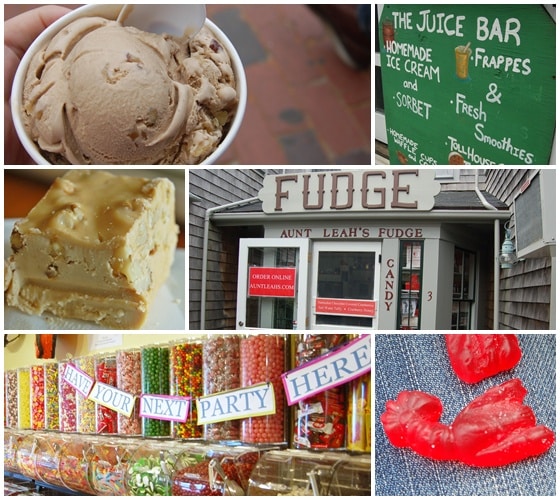 Since we were on a budget, meals were plentiful, tasty and simple. I took full advantage of my love for breakfast with meals at both Arno’s on Main Street for blueberry pancakes one morning, and a Veggie Tuck sandwich (scrambled egg with spinach, tomato, mushroom, and cheddar on an English muffin) with a side of black beans at Fog Island Café the next.
Since we were on a budget, meals were plentiful, tasty and simple. I took full advantage of my love for breakfast with meals at both Arno’s on Main Street for blueberry pancakes one morning, and a Veggie Tuck sandwich (scrambled egg with spinach, tomato, mushroom, and cheddar on an English muffin) with a side of black beans at Fog Island Café the next.
 Dinner one evening was at Brotherhood of Thieves — a short walk from the hotel with a cozy, rustic vibe in their lower level dining room and bar that was just right for ordering a house-made veggie burger, then staying for a few drinks to enjoy the ambiance created by the low ceilings, fireplaces, exposed beams, and brick walls.
Dinner one evening was at Brotherhood of Thieves — a short walk from the hotel with a cozy, rustic vibe in their lower level dining room and bar that was just right for ordering a house-made veggie burger, then staying for a few drinks to enjoy the ambiance created by the low ceilings, fireplaces, exposed beams, and brick walls.
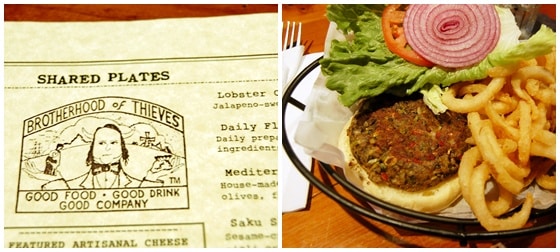 I should also add that when you’re on Nantucket, don’t be surprised if you spot a familiar face. The list of “notable residents and frequent guests” is impressive, and on our visit we saw New England Patriots head coach Bill Belichick (owner of several homes on ‘Sconset) eating a cheeseburger in a downtown bar.
After lots of downtown strolling and window shopping, we rented bicycles from Young’s Bicycle Shop, complete with trademark baskets, then headed west on the scenic 6.2 mile bike path towards Madaket Beach.
I should also add that when you’re on Nantucket, don’t be surprised if you spot a familiar face. The list of “notable residents and frequent guests” is impressive, and on our visit we saw New England Patriots head coach Bill Belichick (owner of several homes on ‘Sconset) eating a cheeseburger in a downtown bar.
After lots of downtown strolling and window shopping, we rented bicycles from Young’s Bicycle Shop, complete with trademark baskets, then headed west on the scenic 6.2 mile bike path towards Madaket Beach.
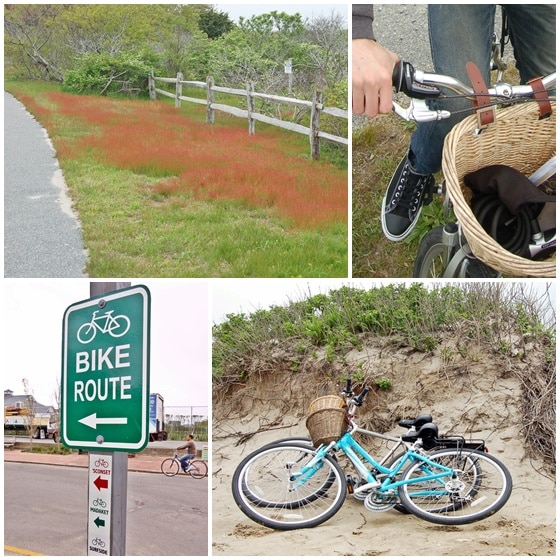 With the cool weather and overcast skies, it certainly wasn’t a beach day, but we took a few moments to sit in the sand and enjoy the Atlantic surf.
With the cool weather and overcast skies, it certainly wasn’t a beach day, but we took a few moments to sit in the sand and enjoy the Atlantic surf.
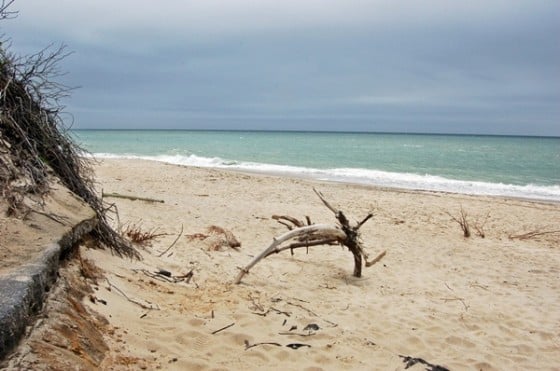 On our final day we headed back downtown. No visit to Nantucket is complete without a stop at the island’s top-notch Whaling Museum. The whaling industry peaked during the 19th century thanks to a need for spermaceti, a waxy substance found in the whale’s head used for numerous commercial products, such as candles, soap, cosmetics, lubricants, crayons, weatherproofing materials, and lamp oil. Nantucket was a prime stop for whaling ships to arrive and depart, and was considered the “Whaling Capital of the World” from 1800 to 1840, when there were as many as 88 Nantucket whaling ships circling the globe.
The star of the museum is a 46-foot sperm whale skeleton suspended over the main exhibit area. The whale died of natural causes and washed ashore on New Year’s Day in 1998. Its body was carefully studied and the bones preserved and expertly cleaned so they could be displayed to demonstrate (to great effect) just how large an animal it really was, and perhaps give it the attention and recognition it deserves for its role in Nantucket history.
On our final day we headed back downtown. No visit to Nantucket is complete without a stop at the island’s top-notch Whaling Museum. The whaling industry peaked during the 19th century thanks to a need for spermaceti, a waxy substance found in the whale’s head used for numerous commercial products, such as candles, soap, cosmetics, lubricants, crayons, weatherproofing materials, and lamp oil. Nantucket was a prime stop for whaling ships to arrive and depart, and was considered the “Whaling Capital of the World” from 1800 to 1840, when there were as many as 88 Nantucket whaling ships circling the globe.
The star of the museum is a 46-foot sperm whale skeleton suspended over the main exhibit area. The whale died of natural causes and washed ashore on New Year’s Day in 1998. Its body was carefully studied and the bones preserved and expertly cleaned so they could be displayed to demonstrate (to great effect) just how large an animal it really was, and perhaps give it the attention and recognition it deserves for its role in Nantucket history.
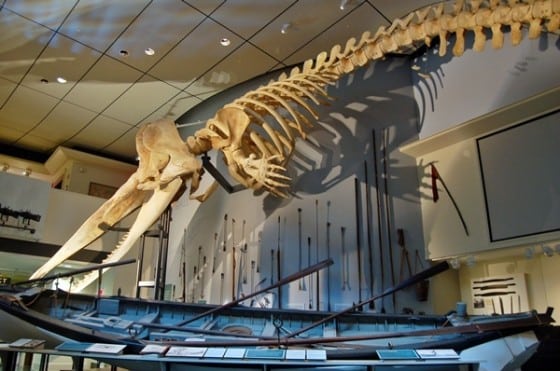 Also on display at the museum is the 1849 Fresnel Lens used in Sankaty Head Lighthouse, a restored 1881 tower clock, and impressive collection of paintings, decorative arts, and scrimshaw art done by sailors on whaling voyages.
The weekend of our visit was also the opening weekend of the downtown Nantucket Hospital Thrift Shop. You might not think this would draw a crowd, but the line to get in stretched down the street. Despite the tight quarters inside (spanning three floors of a house, including a basement with very low ceilings) I managed to pick up a good amount of loot, including some kitchen wares, cookbooks, scarves, and vintage Christmas ornaments. Bargain shoppers take note!
Also on display at the museum is the 1849 Fresnel Lens used in Sankaty Head Lighthouse, a restored 1881 tower clock, and impressive collection of paintings, decorative arts, and scrimshaw art done by sailors on whaling voyages.
The weekend of our visit was also the opening weekend of the downtown Nantucket Hospital Thrift Shop. You might not think this would draw a crowd, but the line to get in stretched down the street. Despite the tight quarters inside (spanning three floors of a house, including a basement with very low ceilings) I managed to pick up a good amount of loot, including some kitchen wares, cookbooks, scarves, and vintage Christmas ornaments. Bargain shoppers take note!
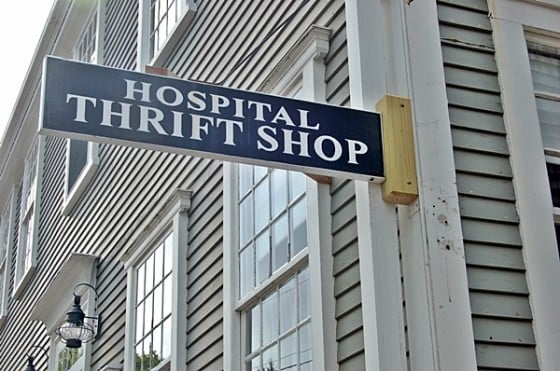 It was a lovely and relaxing few days, and despite my disappointment at not getting a chance to see some other notable historic Nantucket spots, it just gives me a reason to return. Many of the waiters and bartenders (in my opinion, the best folks for a good recommendation) told us to come back in late September when the weather is still warm and sunny, the crowds are light, and the island hosts its annual Restaurant Week. Sounds like a good idea to me!
Then it was back to the ferry, and back to reality. Until next time, Nantucket!
It was a lovely and relaxing few days, and despite my disappointment at not getting a chance to see some other notable historic Nantucket spots, it just gives me a reason to return. Many of the waiters and bartenders (in my opinion, the best folks for a good recommendation) told us to come back in late September when the weather is still warm and sunny, the crowds are light, and the island hosts its annual Restaurant Week. Sounds like a good idea to me!
Then it was back to the ferry, and back to reality. Until next time, Nantucket!
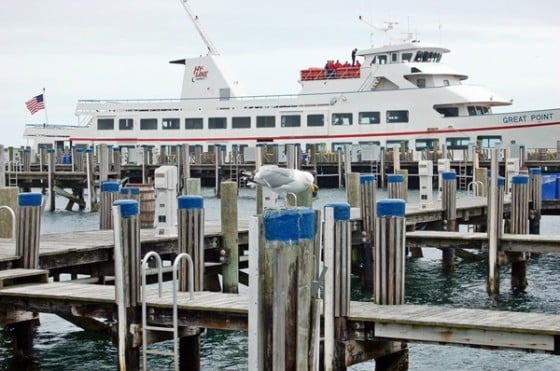 This post was first published in 2012 and has been updated.
This post was first published in 2012 and has been updated.
 I spent a few days there last spring in late May, beneath overcast skies that constantly threatened rain (only fitting for an island nicknamed “The Gray Lady”) but thankfully, never did.
The magnetic pull of Nantucket begins as soon as you leave the ferry and head up Straight Wharf towards Main Street on a perfect jigsaw puzzle of brick and cobblestone. The buildings and shops downtown are meticulously maintained. Scrubbed brick, fresh paint, ocean-air weathered shingles, crisp awnings, and flowers spilling out of windowsills and doorsteps greet you at every turn, urging you to slow your pace and adjust to “island time.”
I spent a few days there last spring in late May, beneath overcast skies that constantly threatened rain (only fitting for an island nicknamed “The Gray Lady”) but thankfully, never did.
The magnetic pull of Nantucket begins as soon as you leave the ferry and head up Straight Wharf towards Main Street on a perfect jigsaw puzzle of brick and cobblestone. The buildings and shops downtown are meticulously maintained. Scrubbed brick, fresh paint, ocean-air weathered shingles, crisp awnings, and flowers spilling out of windowsills and doorsteps greet you at every turn, urging you to slow your pace and adjust to “island time.”
 You might argue that things on Nantucket seem almost too pristine and perfect, like a frozen photo shoot, but for me, that’s the reason to go – to leave reality behind.
Even this old Chevy looks right at home on a Nantucket side street.
You might argue that things on Nantucket seem almost too pristine and perfect, like a frozen photo shoot, but for me, that’s the reason to go – to leave reality behind.
Even this old Chevy looks right at home on a Nantucket side street.
 We stayed at the Jared Coffin House, in a great downtown location, made affordable by taking advantage of a sale online advertising discounted spring rates.
We stayed at the Jared Coffin House, in a great downtown location, made affordable by taking advantage of a sale online advertising discounted spring rates.
 By leaving the car at home, we enjoyed the adventure of studying maps and getting around on our own two feet. It’s easy to feel better about indulging on maple walnut ice cream from The Juice Bar, penuche fudge from Aunt Leah’s, and gummy lobsters from The Nantucket Candy Company when you know you’ll be burning some extra calories while sightseeing on foot!
By leaving the car at home, we enjoyed the adventure of studying maps and getting around on our own two feet. It’s easy to feel better about indulging on maple walnut ice cream from The Juice Bar, penuche fudge from Aunt Leah’s, and gummy lobsters from The Nantucket Candy Company when you know you’ll be burning some extra calories while sightseeing on foot!
 Since we were on a budget, meals were plentiful, tasty and simple. I took full advantage of my love for breakfast with meals at both Arno’s on Main Street for blueberry pancakes one morning, and a Veggie Tuck sandwich (scrambled egg with spinach, tomato, mushroom, and cheddar on an English muffin) with a side of black beans at Fog Island Café the next.
Since we were on a budget, meals were plentiful, tasty and simple. I took full advantage of my love for breakfast with meals at both Arno’s on Main Street for blueberry pancakes one morning, and a Veggie Tuck sandwich (scrambled egg with spinach, tomato, mushroom, and cheddar on an English muffin) with a side of black beans at Fog Island Café the next.
 Dinner one evening was at Brotherhood of Thieves — a short walk from the hotel with a cozy, rustic vibe in their lower level dining room and bar that was just right for ordering a house-made veggie burger, then staying for a few drinks to enjoy the ambiance created by the low ceilings, fireplaces, exposed beams, and brick walls.
Dinner one evening was at Brotherhood of Thieves — a short walk from the hotel with a cozy, rustic vibe in their lower level dining room and bar that was just right for ordering a house-made veggie burger, then staying for a few drinks to enjoy the ambiance created by the low ceilings, fireplaces, exposed beams, and brick walls.
 I should also add that when you’re on Nantucket, don’t be surprised if you spot a familiar face. The list of “notable residents and frequent guests” is impressive, and on our visit we saw New England Patriots head coach Bill Belichick (owner of several homes on ‘Sconset) eating a cheeseburger in a downtown bar.
After lots of downtown strolling and window shopping, we rented bicycles from Young’s Bicycle Shop, complete with trademark baskets, then headed west on the scenic 6.2 mile bike path towards Madaket Beach.
I should also add that when you’re on Nantucket, don’t be surprised if you spot a familiar face. The list of “notable residents and frequent guests” is impressive, and on our visit we saw New England Patriots head coach Bill Belichick (owner of several homes on ‘Sconset) eating a cheeseburger in a downtown bar.
After lots of downtown strolling and window shopping, we rented bicycles from Young’s Bicycle Shop, complete with trademark baskets, then headed west on the scenic 6.2 mile bike path towards Madaket Beach.
 With the cool weather and overcast skies, it certainly wasn’t a beach day, but we took a few moments to sit in the sand and enjoy the Atlantic surf.
With the cool weather and overcast skies, it certainly wasn’t a beach day, but we took a few moments to sit in the sand and enjoy the Atlantic surf.
 On our final day we headed back downtown. No visit to Nantucket is complete without a stop at the island’s top-notch Whaling Museum. The whaling industry peaked during the 19th century thanks to a need for spermaceti, a waxy substance found in the whale’s head used for numerous commercial products, such as candles, soap, cosmetics, lubricants, crayons, weatherproofing materials, and lamp oil. Nantucket was a prime stop for whaling ships to arrive and depart, and was considered the “Whaling Capital of the World” from 1800 to 1840, when there were as many as 88 Nantucket whaling ships circling the globe.
The star of the museum is a 46-foot sperm whale skeleton suspended over the main exhibit area. The whale died of natural causes and washed ashore on New Year’s Day in 1998. Its body was carefully studied and the bones preserved and expertly cleaned so they could be displayed to demonstrate (to great effect) just how large an animal it really was, and perhaps give it the attention and recognition it deserves for its role in Nantucket history.
On our final day we headed back downtown. No visit to Nantucket is complete without a stop at the island’s top-notch Whaling Museum. The whaling industry peaked during the 19th century thanks to a need for spermaceti, a waxy substance found in the whale’s head used for numerous commercial products, such as candles, soap, cosmetics, lubricants, crayons, weatherproofing materials, and lamp oil. Nantucket was a prime stop for whaling ships to arrive and depart, and was considered the “Whaling Capital of the World” from 1800 to 1840, when there were as many as 88 Nantucket whaling ships circling the globe.
The star of the museum is a 46-foot sperm whale skeleton suspended over the main exhibit area. The whale died of natural causes and washed ashore on New Year’s Day in 1998. Its body was carefully studied and the bones preserved and expertly cleaned so they could be displayed to demonstrate (to great effect) just how large an animal it really was, and perhaps give it the attention and recognition it deserves for its role in Nantucket history.
 Also on display at the museum is the 1849 Fresnel Lens used in Sankaty Head Lighthouse, a restored 1881 tower clock, and impressive collection of paintings, decorative arts, and scrimshaw art done by sailors on whaling voyages.
The weekend of our visit was also the opening weekend of the downtown Nantucket Hospital Thrift Shop. You might not think this would draw a crowd, but the line to get in stretched down the street. Despite the tight quarters inside (spanning three floors of a house, including a basement with very low ceilings) I managed to pick up a good amount of loot, including some kitchen wares, cookbooks, scarves, and vintage Christmas ornaments. Bargain shoppers take note!
Also on display at the museum is the 1849 Fresnel Lens used in Sankaty Head Lighthouse, a restored 1881 tower clock, and impressive collection of paintings, decorative arts, and scrimshaw art done by sailors on whaling voyages.
The weekend of our visit was also the opening weekend of the downtown Nantucket Hospital Thrift Shop. You might not think this would draw a crowd, but the line to get in stretched down the street. Despite the tight quarters inside (spanning three floors of a house, including a basement with very low ceilings) I managed to pick up a good amount of loot, including some kitchen wares, cookbooks, scarves, and vintage Christmas ornaments. Bargain shoppers take note!
 It was a lovely and relaxing few days, and despite my disappointment at not getting a chance to see some other notable historic Nantucket spots, it just gives me a reason to return. Many of the waiters and bartenders (in my opinion, the best folks for a good recommendation) told us to come back in late September when the weather is still warm and sunny, the crowds are light, and the island hosts its annual Restaurant Week. Sounds like a good idea to me!
Then it was back to the ferry, and back to reality. Until next time, Nantucket!
It was a lovely and relaxing few days, and despite my disappointment at not getting a chance to see some other notable historic Nantucket spots, it just gives me a reason to return. Many of the waiters and bartenders (in my opinion, the best folks for a good recommendation) told us to come back in late September when the weather is still warm and sunny, the crowds are light, and the island hosts its annual Restaurant Week. Sounds like a good idea to me!
Then it was back to the ferry, and back to reality. Until next time, Nantucket!
 This post was first published in 2012 and has been updated.
This post was first published in 2012 and has been updated. SEE MORE:
- Each year the island shows its holiday spirit when it hosts the annual Christmas Stroll weekend in December. Read about the Christmas Stroll in Nantucket or view a slideshow.
- Do you own any clothing in Nantucket Red? Hint- it’s not actually red.
- Are you a fan of the iconic Nantucket Basket? Read about how the Nantucket Lightship Baskets were first made by lonely sailors.
Aimee Tucker
Aimee Tucker is Yankee Magazine’s Home Editor and the Senior Digital Editor of NewEngland.com. A lifelong New Englander and Yankee contributor since 2010, Aimee has written columns devoted to history, foliage, retro food, and architecture, and regularly shares her experiences in New England travel, home, and gardening. Her most memorable Yankee experiences to date include meeting Stephen King, singing along to a James Taylor Fourth of July concert at Tanglewood, and taking to the skies in the Hood blimp for an open-air tour of the Massachusetts coastline.
More by Aimee Tucker

